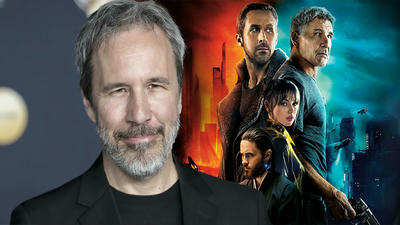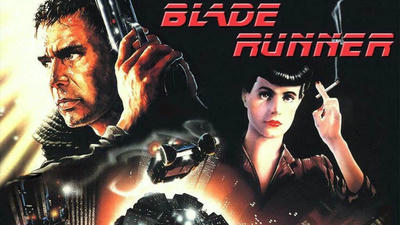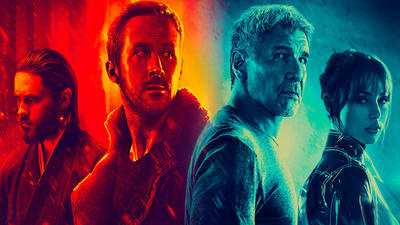
Beyond the Box Office: How Blade Runner Forged its Enduring Legacy as a Cult Classic
The journey of Blade Runner from its 1982 theatrical release to its current status as a revered cult classic stands as a singular phenomenon in cinematic history. Initially met with critical indifference and commercial disappointment, this science fiction neo-noir gem baffled audiences and industry observers alike. It presented a complex, visually dense vision of a dystopian future that defied conventional blockbuster expectations, laying the groundwork for a fascinating case study in artistic re-evaluation and the slow burn of cultural resonance.
At its core, Blade Runner grapples with profound questions of identity, humanity, and the nature of artificial intelligence, set against a stunningly realized cyberpunk Los Angeles. Its initial reception, however, was marred by a divisive theatrical cut, marketing missteps, and strong competition, leading to a significant financial loss. Yet, over decades, through home video releases, re-cuts, and persistent academic and fan engagement, the film transcended its commercial failure, becoming a touchstone for filmmakers, artists, and philosophers. It profoundly influenced the visual language and thematic depth of countless subsequent works in science fiction and beyond. This trajectory highlights a crucial question: What impact would it have on our understanding or practice of art and culture if we failed to fully comprehend the mechanisms behind a work's delayed recognition and eventual triumph?
Initial Scrutiny: Blade Runner's Tumultuous Debut

The Perils of Expectations: Marketing Missteps and Critical Divides
Released on June 25, 1982, Blade Runner entered a crowded summer blockbuster season dominated by feel-good spectacles like Steven Spielberg's E.T. the Extra-Terrestrial. The film, directed by Ridley Scott, was a dark, introspective, and visually groundbreaking adaptation of Philip K. Dick's novel Do Androids Dream of Electric Sheep?. However, its marketing campaign struggled to define its genre and appeal. Promoted as an action thriller, it failed to deliver the straightforward excitement audiences expected, instead offering a slow-burn philosophical inquiry. Many critics were puzzled by its narrative pace and ambiguous themes, leading to mixed-to-negative reviews. Roger Ebert, for instance, praised its visuals but found it lacking in emotional engagement. The film's challenging premise, exploring the blurred lines between humans and "replicants" (bioengineered humanoids), was lost on a mainstream audience seeking escapism.
Financially, Blade Runner was a significant "box office bomb"—a term describing a film that fails to recoup its production and marketing costs. With an estimated budget of $28 million, it only grossed approximately $33.8 million worldwide during its initial run, a stark disappointment for a major studio release. This commercial failure led to studio interference, resulting in the infamous US theatrical cut which featured a studio-mandated happy ending and a voiceover narration by Harrison Ford, both widely criticized for undermining the film's original intent. This initial struggle underscored the difficulty of introducing complex, genre-defying cinema to a mass market unprepared for its depth.
Beyond the Box Office: The Director's Cut and Reappraisal
Unveiling Vision: Director's Intent, Academic Discourse, and Fan Dedication
Despite its initial commercial and critical stumble, Blade Runner found a second life through home video and late-night television broadcasts, slowly accumulating a dedicated following. This burgeoning interest paved the way for the release of the "Director's Cut" in 1992, a watershed moment that dramatically shifted the film's perception. This version removed the studio-imposed happy ending and, crucially, the explanatory voiceover, allowing the film's inherent ambiguity and dark, neo-noir atmosphere to fully resonate. A new scene, a unicorn dream sequence, further fueled one of the film's central debates: Is protagonist Rick Deckard, a "blade runner" tasked with hunting down rogue replicants, himself a replicant? This ambiguity deepened the film's philosophical underpinnings concerning identity and humanity.
The Director's Cut was largely embraced by critics and scholars, who began to dissect its rich themes—existentialism, corporate power, environmental decay, and artificial intelligence. Academic papers analyzed its visual aesthetics, drawing parallels to film noir and German Expressionism, and its profound influence on the emerging cyberpunk genre. Fan communities, sharing theories and analyses, actively contributed to its growing reputation. The film's visual design, often credited to Syd Mead and Lawrence G. Paull, became iconic, inspiring countless artists and filmmakers. By the time the "Final Cut" (2007) was released, a definitive version overseen by Ridley Scott himself, Blade Runner had firmly cemented its place as a "cult classic"—a film that, despite its initial commercial performance, garnered a passionate, enduring fan base and significant critical re-evaluation.
The evolution of Blade Runner across its various iterations highlights the impact of artistic vision on reception. Below is a comparison of the primary cuts:
| Version | Release Year | Key Changes | Critical Reception Shift |
|---|---|---|---|
| Theatrical Cut (US) | 1982 | Studio-mandated happy ending, Deckard voiceover | Mixed/Negative |
| Director's Cut | 1992 | No voiceover, ambiguous ending, unicorn dream sequence | Positive Reappraisal |
| Final Cut | 2007 | Ridley Scott's definitive version, restored scenes, enhanced visuals | Universal Acclaim |
This table illustrates how specific changes, particularly the removal of explanatory elements and the introduction of thematic ambiguity, allowed the film's true depth to emerge and be appreciated. The Final Cut, in particular, solidified its status by presenting the most polished and artistically cohesive version of Scott's original vision, leading to widespread critical endorsement as a masterpiece.
A Lasting Resonance: Blade Runner's Unwavering Impact

Blueprint for Dystopia: Visual Aesthetics, Philosophical Depths, and Genre Evolution
The influence of Blade Runner on subsequent cinema, literature, and popular culture is immense and undeniable. Its visual aesthetics, characterized by a perpetually rainy, neon-drenched dystopian Los Angeles, established the definitive look of the cyberpunk genre. This blend of futuristic technology with decaying urban grit—known as "tech-noir"—became a blueprint, inspiring films like The Matrix, Ghost in the Shell, and even games like Deus Ex and Cyberpunk 2077. Production designers and cinematographers continue to draw from its meticulously crafted world, from the towering brutalist architecture to the flickering advertisements and perpetual twilight.
Beyond its visual prowess, Blade Runner deepened the philosophical discourse in science fiction. Its exploration of artificial intelligence, memory implantation, and the ethical implications of creating sentient life profoundly influenced discussions on what constitutes "humanity." The film challenges viewers to question their own biases and assumptions, making "replicant" a metaphor for the marginalized and oppressed. Its themes of corporate control, environmental collapse, and the search for identity in a dehumanizing world resonate even more strongly today, forty years after its release. Blade Runner is not merely a film; it is a cultural touchstone that continuously provokes thought and shapes our imagination of the future.
Conclusion
Blade Runner's transformation from a box office bomb to an undisputed cult classic is a compelling testament to the complex, often non-linear process of artistic validation. Its initial commercial failure stemmed from a confluence of factors: a challenging narrative released in an era of simplistic blockbusters, an initially misunderstood marketing campaign, and a studio-compromised theatrical cut. Yet, the film's profound visual artistry, its rich philosophical tapestry exploring identity and humanity, and its groundbreaking depiction of a dystopian future gradually captivated a discerning audience. Through home video, academic re-evaluation, and the release of director-approved versions, Blade Runner became a powerful case study in the delayed recognition of art that is ahead of its time, demonstrating that true cinematic value often ripens over decades, not merely on opening weekend. Today, it stands as a cornerstone of science fiction cinema, its depth and innovation unparalleled.
Looking ahead, the enduring appeal of Blade Runner underscores the importance of artistic integrity and allowing creative works the time and space to find their audience. Future trends in film appreciation will likely continue to emphasize the value of director's cuts and restored editions, facilitated by advancements in digital preservation and streaming platforms, which make previously obscure versions widely accessible. As artificial intelligence and biotechnologies advance, the film's core ethical dilemmas will only grow more pertinent, ensuring its continuous relevance in public and academic discourse. This trajectory highlights a crucial challenge for the film industry: recognizing the potential for long-term cultural impact beyond immediate commercial metrics. Continuous research into audience reception and the evolution of cinematic language is essential to understand how groundbreaking works can be nurtured, appreciated, and allowed to shape future generations' understanding of art, technology, and humanity itself.
Frequently Asked Questions (FAQ)

Q: Why are there so many versions of Blade Runner, and which one should I watch? A: The multitude of Blade Runner versions is a common source of confusion, stemming from creative conflicts between director Ridley Scott and the film's producers. The three most significant versions are the 1982 US Theatrical Cut, the 1992 Director's Cut, and the 2007 Final Cut. The 1982 Theatrical Cut, the one initially released in cinemas, features a studio-mandated voiceover narration by Harrison Ford and a more optimistic "happy ending" where Deckard and Rachael drive off into the sunset. This version was designed to make the plot easier for audiences to follow and to provide a more conventional resolution, but it was heavily criticized by Scott and many fans for undermining the film's dark, ambiguous tone. The 1992 Director's Cut removed the voiceover, deleted the happy ending, and introduced the pivotal "unicorn dream sequence," which subtly suggested that Deckard might be a replicant himself. This version was widely embraced for restoring much of Scott's original vision and deepening the film's philosophical themes. Finally, the 2007 Final Cut is Ridley Scott's definitive version. It further refined the Director's Cut, meticulously restoring damaged footage, correcting continuity errors, enhancing special effects, and ensuring that every element aligned with Scott's ultimate artistic intent. For a first-time viewer or anyone wanting to experience the film as its director intended, the Final Cut (2007) is universally recommended as the most complete and cohesive artistic statement. However, watching the Theatrical Cut can offer valuable insight into the pressures of studio filmmaking and the drastic differences in audience experience.
Q: Is Deckard a Replicant? What does this mean for the film's message? A: The question of whether Rick Deckard is a replicant is one of Blade Runner's most enduring and hotly debated mysteries, central to its thematic depth. Director Ridley Scott has consistently stated his belief that Deckard is indeed a replicant, an interpretation strongly supported by elements in the Director's and Final Cuts, particularly the unicorn dream sequence (which implies Deckard shares memories with Rachael, who is a replicant with implanted memories) and Gaff's origami unicorn at the end. However, the film itself deliberately leaves it ambiguous, allowing for viewer interpretation, especially in the Theatrical Cut where the implication is less pronounced. If Deckard is a replicant, it profoundly impacts the film's message: it blurs the lines between human and artificial life even further, suggesting that the very act of hunting replicants is a form of self-hatred or a futile attempt to define a superior "humanity." This interpretation posits that humanity is not an inherent biological state but rather a quality of empathy, experience, and self-awareness, which replicants demonstrably possess. It challenges the audience to question their own prejudices and definitions of life. Conversely, if Deckard is human, the film becomes a commentary on the corrosive nature of his work, highlighting how hunting and deactivating replicants strips him of his own humanity and empathy. Both interpretations are valid within the narrative, but Scott's preferred reading as a replicant provides a more ironic and existentially unsettling commentary on identity, memory, and the blurred boundaries of being.








